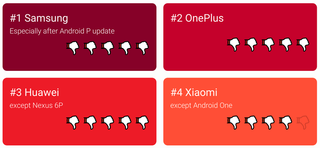The ASUS ROG 5 Ultimate's 18GB of RAM is crazy, but awesome

Yep. The new ASUS Republic of Gamers Phone 5 Ultimate (that's a mouthful) has up to 18 GB of RAM under the hood. That's enough to store over 19 billion ASCII characters if you were writing the longest email ever or even enough to play Cyberpunk 2077 with Ray Tracing enabled if it were on your video card, so it's a lot.
Unneccessary? ✔️ Cool anyway? ✔️
It's also completely unnecessary but so very cool. Don't ask me why I think it's so cool because I don't really have an answer other than "you can have 18GB of RAM inside a phone and that's so cool!" but I know there are at least a few people out there that agree with me on that.
Enough about the cool factor, though. The real question would be how practical it is to have 18GB of RAM inside a phone, no matter if it's sold as a gaming phone or not. That one is easy to answer — it's not practical at all, not even a little bit. And that's not just me talking because you can easily see how well something like a Galaxy S21 or any of the other best Android phones do everything you want them to do with less.
It's not really the amount of memory that makes the ROG 5 Ultimate a "gaming" phone, it's things like a very high 300Hz touch sample rate and excellent cooling options that keep the processor running at a higher clock speed for a longer amount of time. No matter what Android game you might be playing, you're going to have oodles of RAM left for other phone things to keep working and still have plenty free and untouched.
Android doesn't use RAM the way you probably think it does.
At least right now, and that could be important. RAM in your Android phone is used differently than on any other desktop computer, even a gaming PC, and as things keep progressing, more of it is used before your phone even finished booting up. A look at how your phone uses RAM as a quick refresher is in order here, I think.
As your phone is booting up, RAM is used to hold kernel processes and threads, external kernel modules once unpacked. That RAM is taken and can't ever be freed. RAM also holds the actual cellular radio files in memory, as well as a few system-level utilities that always need to be running and those also get a dedicated portion of RAM that you can't use.
Not all the RAM is yours to use.
The GPU (it's inside the SoC, but there is a separate GPU on the chip) also gets some RAM so it can operate, and you don't get to use that RAM either. Finally, you need some RAM to start and keep Android itself running because the operating system has plenty of utilities and apps it needs to actually work.
Be an expert in 5 minutes
Get the latest news from Android Central, your trusted companion in the world of Android
Once your phone is running and you've unlocked it, figure that 1-3GB of RAM is locked away and there is nothing you can do about it unless you get wild with root permissions. This is why even Google had to start adding more RAM to its Pixel phones because things like the camera were taking too long to load.

Next is how Android manages system RAM. As you use your phone, the apps you use the most get kept in memory, either actively working or in a suspended state. Not because the system is learning what you like, but because the more often you use an app, the more often it gets bumped to the top of a sort of "kill list" that's used to shut down apps to free more RAM.
The more you use an app, the longer it sits at the top of the list of apps to keep alive.
For example, if you use Instagram a lot, you're probably checking it a lot throughout the day. Each time you open it and make it the active foreground app, it's at the top of the list. Apps that you haven't used in a while keep moving lower and the lowest apps on the list are the ones that get shut down first.
This is a general overview and of course, it is much more complicated, but that's the gist of it. RAM that's "free" in Android might not really be unused, but the system has no problem killing off whatever is there to make more space for something new. Before phone manufacturers started putting "extra" RAM inside, we would see apps get killed when we didn't want them to be killed, and this is why.
It also has nothing to do with phones killing apps to save battery, which is stupid, and Huawei, One Plus, Samsung, Nokia, etc. should be ashamed of themselves for doing it when a better alternative is built into Android itself.

Knowing that 1) You don't get to use all the RAM inside your phone, and 2) RAM on Android is supposed to be used to mostly hold apps, you can start to see why having a metric crapton of it could be beneficial. Not that you need 18GB of it, but a little extra can't hurt.
18GB of RAM means you can have as many Chrome tabs as you want open. But not really.
Here's where things can get all kinds of fun. Figure that the ROG 5 Ultimate will have about 10GB of RAM you don't really need but you can still use. A big fancy 3D game from Google Play, something like GRID Autosport, for example, is going to need 4GB or so of it to comfortably run. Now you have 6GB of leftover RAM that you can use before Android needs to kill something to make more room in memory.
Playing two 3D graphically intensive games at the same time while in a split-screen isn't practical (and can't happen because most are hardcoded to use the full display) but substitute YouTube and Chrome and Instagram for games. Chances are you'll open your favorite app when you reboot your phone and never have to re-launch it again because it instantly snaps to life. RAM be fast like that.

On top of this, it's so damn futureproof. Android with no third-party apps running requires 512MB (not GB, MB) to run but really needs at least 2GB to run well. That's because apps start working as soon as you unlock your phone, even if we wish they didn't. Android 1.6 ran fine with the whopping 192MB of RAM on the T-Mobile G1 back when it was released in 2008. Today, you need 2GB and probably want at least 4 or 6GB. Tomorrow who knows.

Apps are getting bigger and more memory-hungry, too. Then there's always at least one app you want to use that's buggy and eats RAM for no reason. Having 18GB of it means you never need to worry about not having enough. By the time you need 18GB of RAM, the ROG 5 Ultimate will be a memory of recycled parts or something that lives in your junk drawer and the latest ROG phone will probably have 32GB of RAM.
Now that's cool.

Jerry is an amateur woodworker and struggling shade tree mechanic. There's nothing he can't take apart, but many things he can't reassemble. You'll find him writing and speaking his loud opinion on Android Central and occasionally on Twitter.
